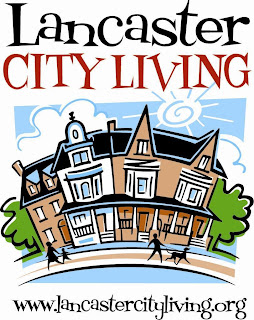Wednesday, October 1, 2008
Don’t let the Green Grass Fool You – Part II
Tuesday, September 30, 2008
Buying a House in Lancaster City Makes Sense

People used to choose living in
Tuesday, February 12, 2008
Don’t Let the Green Grass Fool You
 The
The Weighing in, Thomas Sugrue, a professor of history and sociology at the
Even the creation of higher density suburban developments help. TND's anyone?
Wednesday, January 30, 2008
In Lancaster, 70 is the new 50
With this trend in mind, the Lancaster Downtowners formed to create a resource network for those wishing to retire in Lancaster City. Based on the model created in Boston's Beacon Hill, the downtowners have already gained considerable momentum and are now applying for 501 (c) (3) status. In addition to its other offerings, the Downtowners also operate a list serve allowing members to connect quickly with important information.
You don't have to be retired to join the downtowners. Increasing numbers of pre-retiree's are joining the bandwagon to see to it that the services they need when they do retire will be available. Check it out.
Tuesday, January 29, 2008
Traditional Neighborhood Developments (TND's)
Traditional Neighborhood Developments (TND's) are supposed to be the wave of the future. But like a lot of things in suburbia, the concept is meeting with some pretty stiff resistance – most recently in
What makes traditional neighborhoods attractive has much less to do with the actual density of the housing than what the physical structure of such neighborhoods do for their residents. They provide places where human interactions create a social and commercial fabric that makes the community not only richer but more competitive.
Friday, January 18, 2008
About First Time Homebuyers
Data shows us that the most remaining affordable homes in the Lancaster area are in Lancaster City. The numbers also show that the city's stock of affordable homes is slowly disappearing as demand increases. That means buy now.
Of course, a house is far more than an investment. It's a place to live. And, there is great incentive to live in cities like Lancaster. Employees of Downtown have discovered that living close-by means spending less time on the road and more time with family and friends. Retirees are discovering the joys of life within close walking distance of Lancaster's many amenities without the frustration of maintaining a large yard.
Others are moving to into Lancaster City and buying houses because living where you can walk to your destination means burning a lot less gasoline or simply because the city is "just the place to be."
If you need a boost in getting started with a good Realtor , a listing of available homes or an agency that can help you find your way contact Lancaster City Living.
Thursday, January 17, 2008
Hmmm...City On Fire

When people used to use words like "on fire" or "exploding" to describe Lancaster City it wasn't a good thing. They were talking about problems the city was struggling with. This isn't the case anymore. Today when people use terms like that, they are talking about the massive amount of development (mostly commercial) that has taken place at break-neck speed. You'd think that all this would have a spill-over effect on the residential market. Well, the data says it has. Property values have increased and houses are spending less time on the market. What does this mean for potential buyers? I'll address that in my next post. But first, the numbers:
In 2000, the average house in the city sold for $59,968 and spent 96 days on the market. A chain of unbroken property value increases has continued from then until now with a 5.6% increase in 2001, 13.5% in 2002, 3.7% in 2003, 16.9% in 2004, 5.1% in 2005, 4.5% in 2006, and finally 5.3% in 2007. That's an annual average increase of about 7.8%. During the same period, the amount of time houses were spending on the market dropped from 96 days to about 45.
Lancaster City is probably the last bastion of affordability in Lancaster County and the window of opportunity to buy while it is affordable looks like it's closing.
Wednesday, January 16, 2008
Welcome to the Lancaster City Living Blog!

Lancaster City Living is in its second year of promoting increased homeownership in Lancaster City. The effort has employed the use of a website (www.lancastercityliving.org), a magazine (The Ultimate Guide to Owning a Home in Lancaster City), a "storefront" at 308 East King Street and a host of other activities.
What makes this issue so important is that increased homeownership helps to take care of a lot of other community issues. A good number of well kept rental units is important but, when the rental stock becomes the majority of housing units, the majority of the population takes a temporary view of their role in the community. In short, when you own your home you care more about issues like crime, schools and trash.
The good news is that Lancaster is on fire with development. The promise this holds is on a magnitude not seen in decades. The push for homeownership is simply one of the last pieces in this development. If you want to know what is going on, visit the Lancaster City Living website and check out what's new. You can find it by clicking on the "Pop" icon on the lower right hand corner of the home page.
For the back story check here.